Last Updated on November 11, 2025 by Maged kamel
Area and Cg for a Parallelogram.
Reference handbook 10.00 value for area and Cg at the x-direction.
To get the area and Cg for a parallelogram, we will divide the parallelogram into a rectangle and two triangles and consider taking the first moment of area about a vertical axis y passing by the external edge point about the external axes. This will give the x-bar of the parallelogram.
As for the Y bar, we will do the same process, but the first moment of the area will be taken about an external axis passing by the base which is then called the x-axis. it is required to get the same data as obtained from the FE reference handbook as attached in the next slide image, for case #No.6.
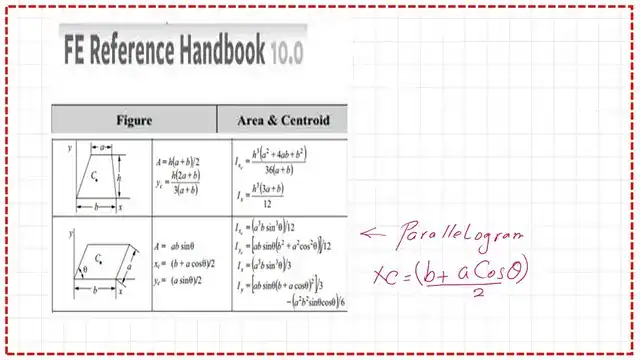
Area and Cg for a parallelogram at the x-direction.
To get Area and Cg for a parallelogram at the x-direction. we will check the base b and height h- is and then we divide it into the following shapes:
1-A left triangle of base (b1cos θ) and a height of h, its area A2=1/2*( b1cos θ)*h, its CG is apart from the y-axis by a distance x1=(2/3*(b1cos θ).
2-A rectangle of base (b-b1*cos θ) and a height of h, its area A1=(b-b1*cos θ)*h, its CG is apart from the y-axis by a distance x2=1/2* (b+b1*cos θ).
3-A right triangle of base b1*cos θ and a height of h, its area A3=1/2*b1*cos θ*h, its CG is apart from the y-axis by a distance x3=(b+1/3*b1*cos θ).
We will simplify the expression by adjusting the different terms, the area will be=b*h as a skewed rectangle. The next two slide images give the full details of the estimation.
The area of the Parallelogram is the Area of the left triangle+area of the rectangle+ area of the right triangle, The details of these shapes are shown in the next slide images.
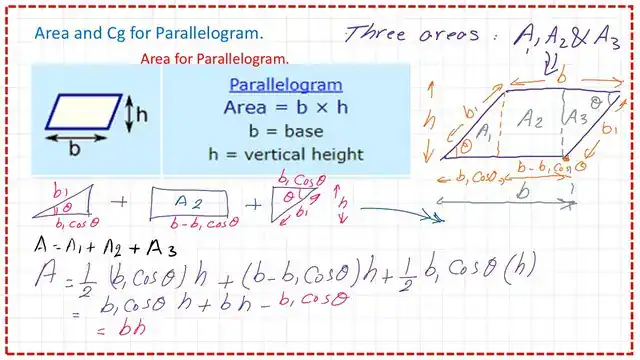
x1,x2, and x3 values are shown in the next slide image.x1 is the first triangle Cg distance to the y-axis. Similarly, x2 is the Cg distance for the rectangle shape about the y-axis.x3 is the x distance for the third shape from the Y-axis.
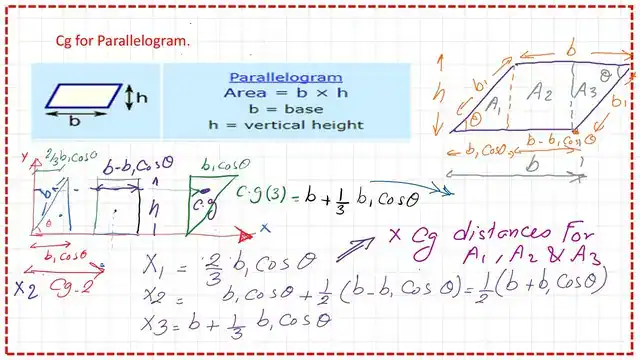
The first moment of areas for these three shapes will be = the first moment of area for the Parallelogram about the Y-axis.
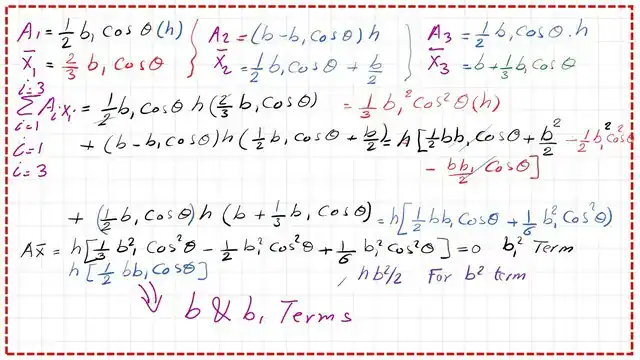
The final value for area and Cg of a Parallelogram at the x-direction.
We will have the final expression for the distance of the Cg of the parallelogram about the y-axis, which is the X-bar. The next EFUNDA will show the same expression but considered as a- instead of a.
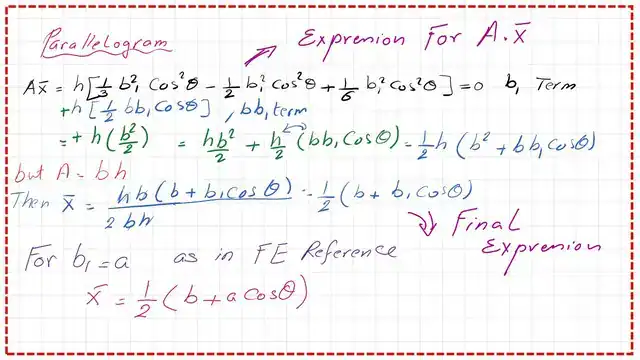
Area and Cg for a parallelogram at the y-direction.
The parallelogram with base b and height h, is divided into the following shapes:
1-A left triangle of base (b1cos θ) and a height of h, its area A2=1/2*( b1cos θ)*h, its CG is apart from the x-axis by a distance y1=(1/3*h).
2-A rectangle of base (b-b1*cos θ) and a height of h, its area A1=(b-b1*cos θ)*h, its CG is apart from the x-axis by a distance y2=1/2*h.
3-A right triangle of base b1*cos θ and a height of h, its area A3=1/2*b1*cos θ*h, its CG is apart from the X-axis by a distance Y3=2/3h.
The area of the Parallelogram is the Area of the left triangle+area of rectangle+ area of the right triangle, The details of these shapes are shown in the next slide images.
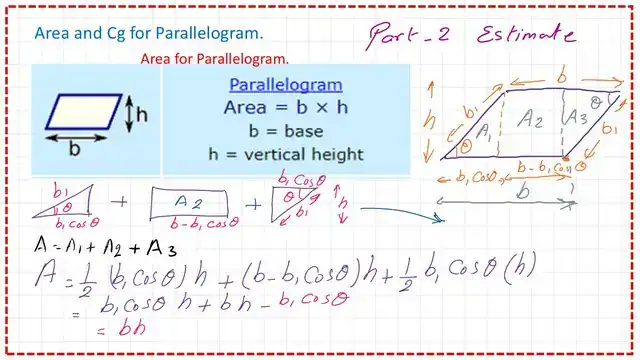
After adjusting the various terms we will have Y bar =h/2. the expression in terms of a will be used as h=b1*cos θ.
To get the expression for the Rectangle, we will consider θ as=90 degrees. For the Moment of inertia Ix for a parallelogram, please find the link.

This is a link to the previous post. We have estimated the area and CG for a trapezium.
Please refer to the practice problem for the x and Y coordinates for a given Trapezoidal area
ُEfunda gives a useful link for areas, and Cg can be viewed.